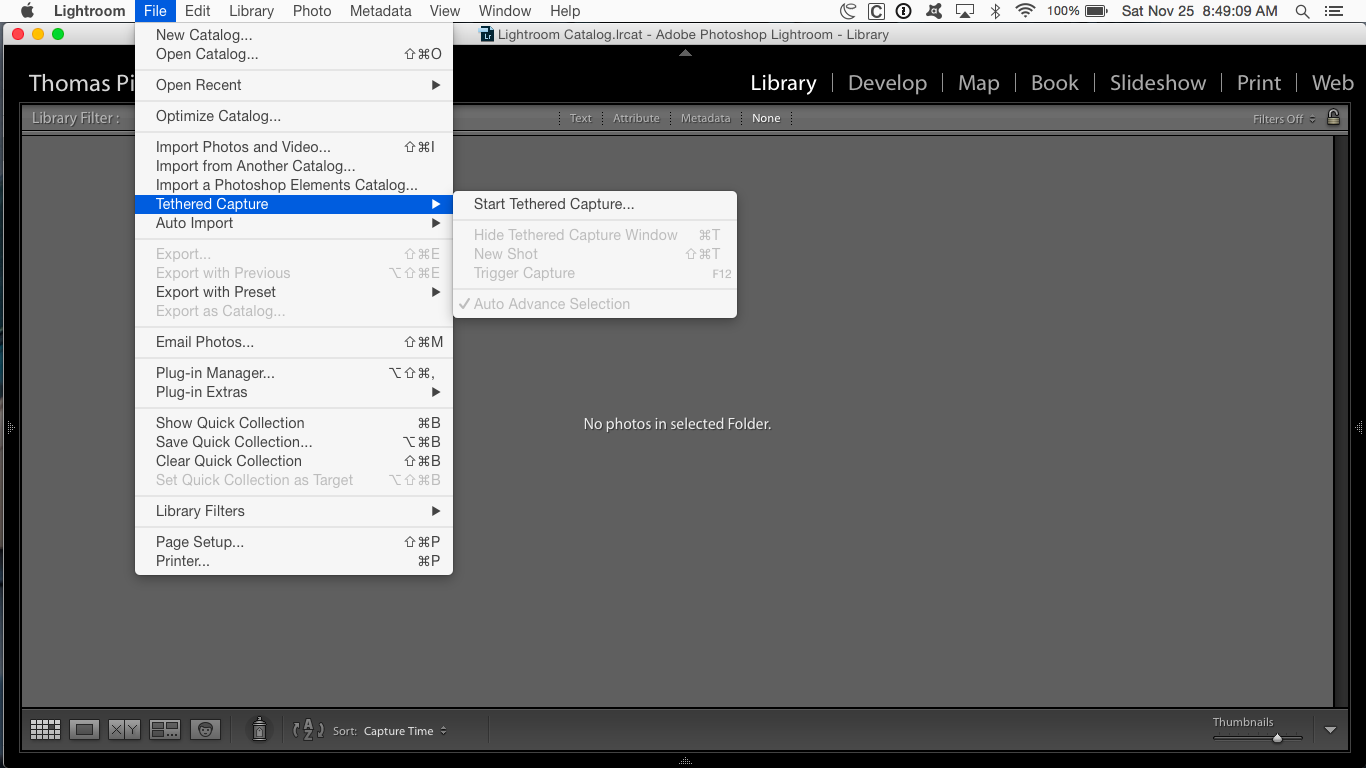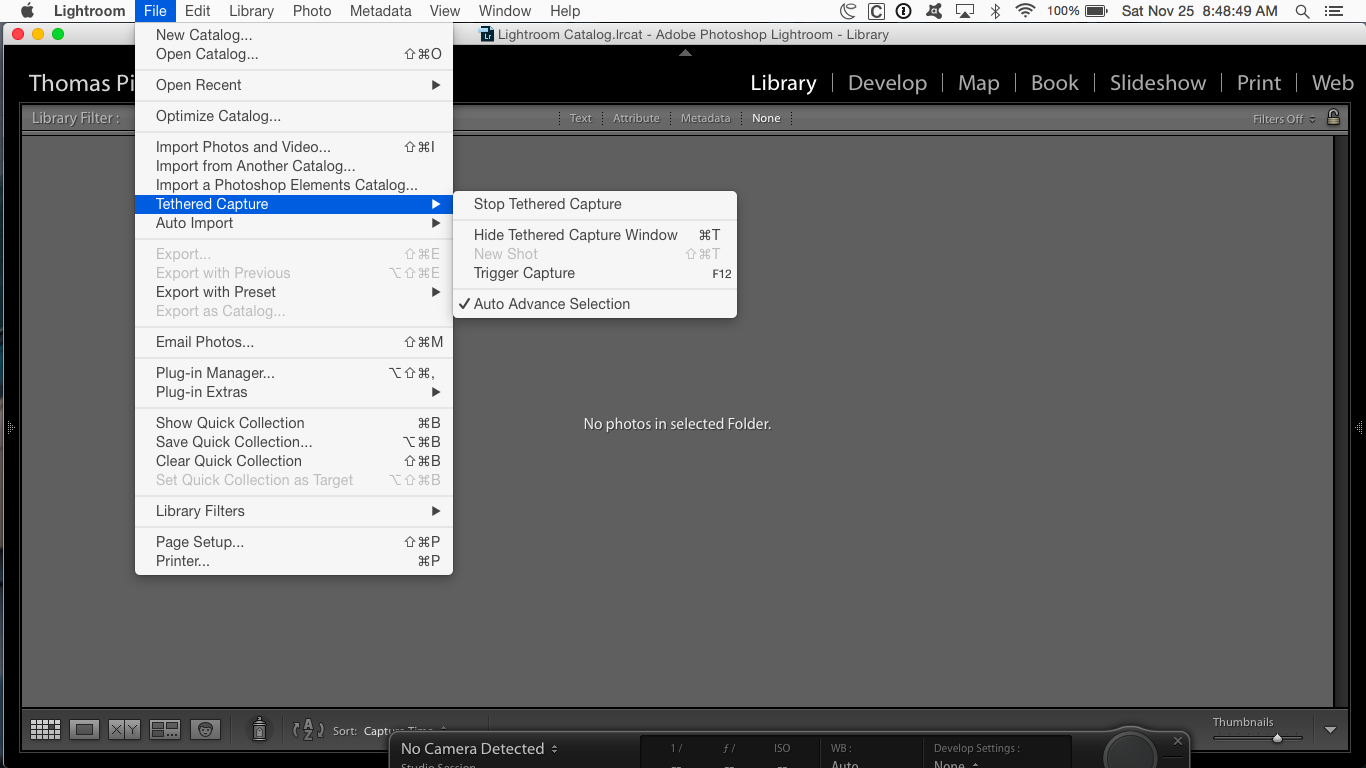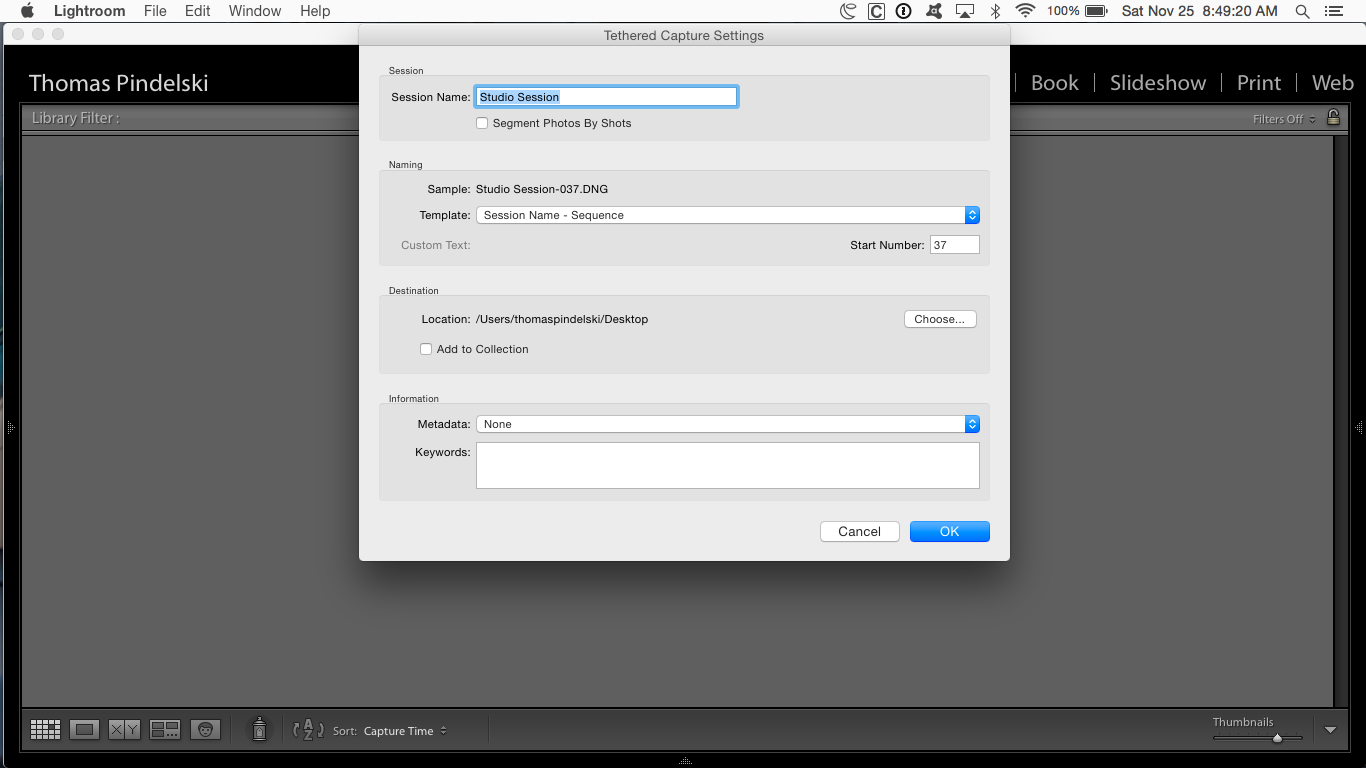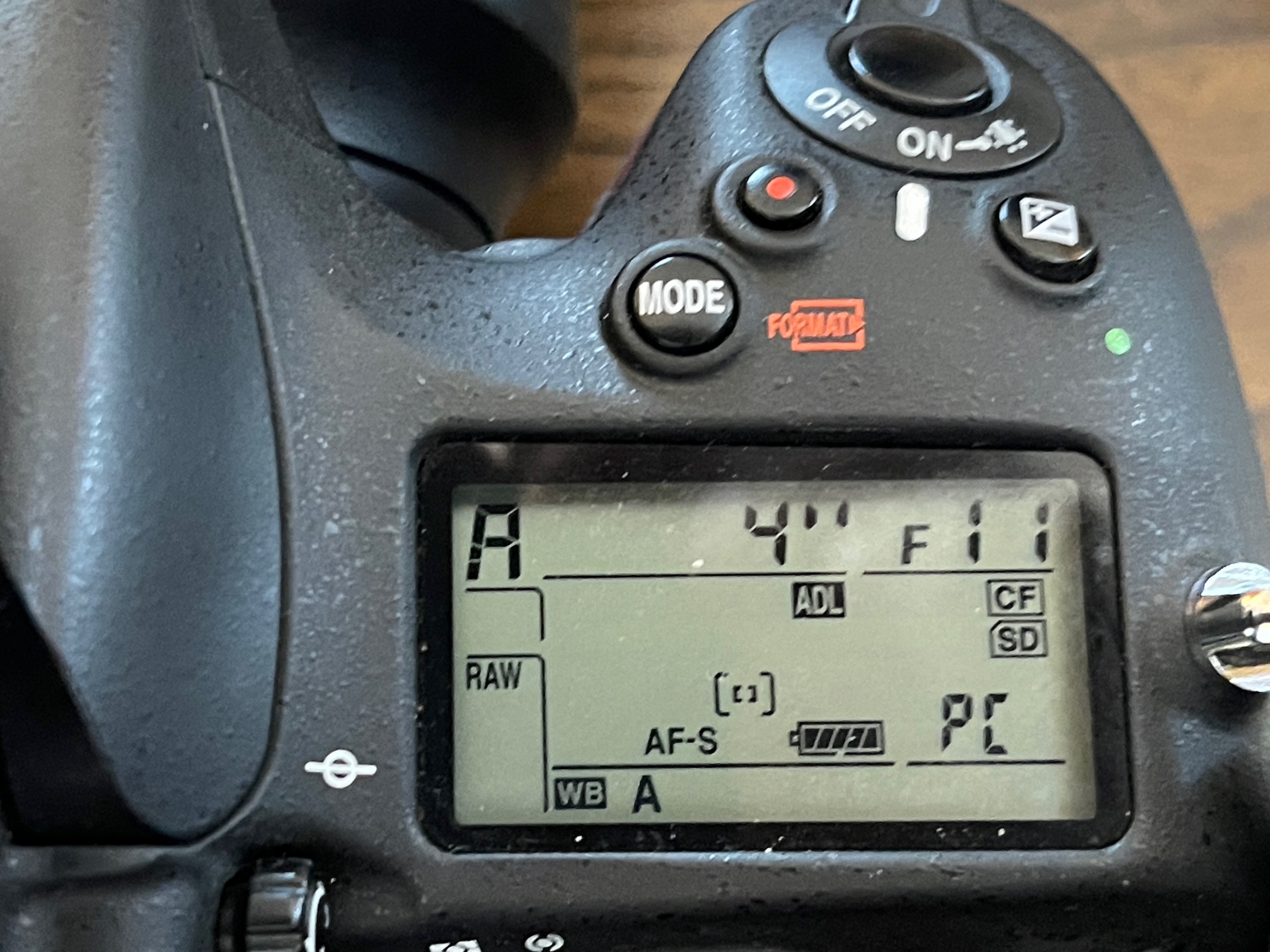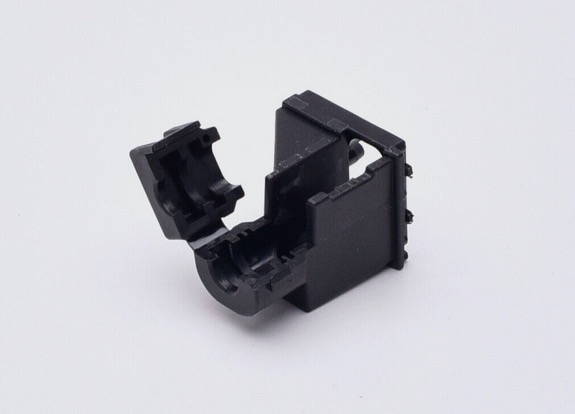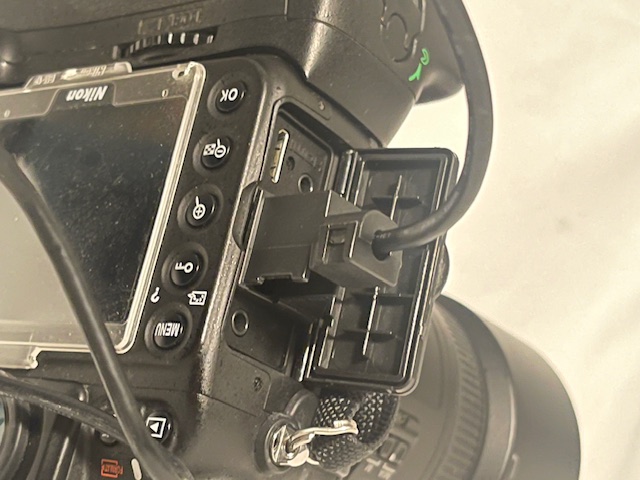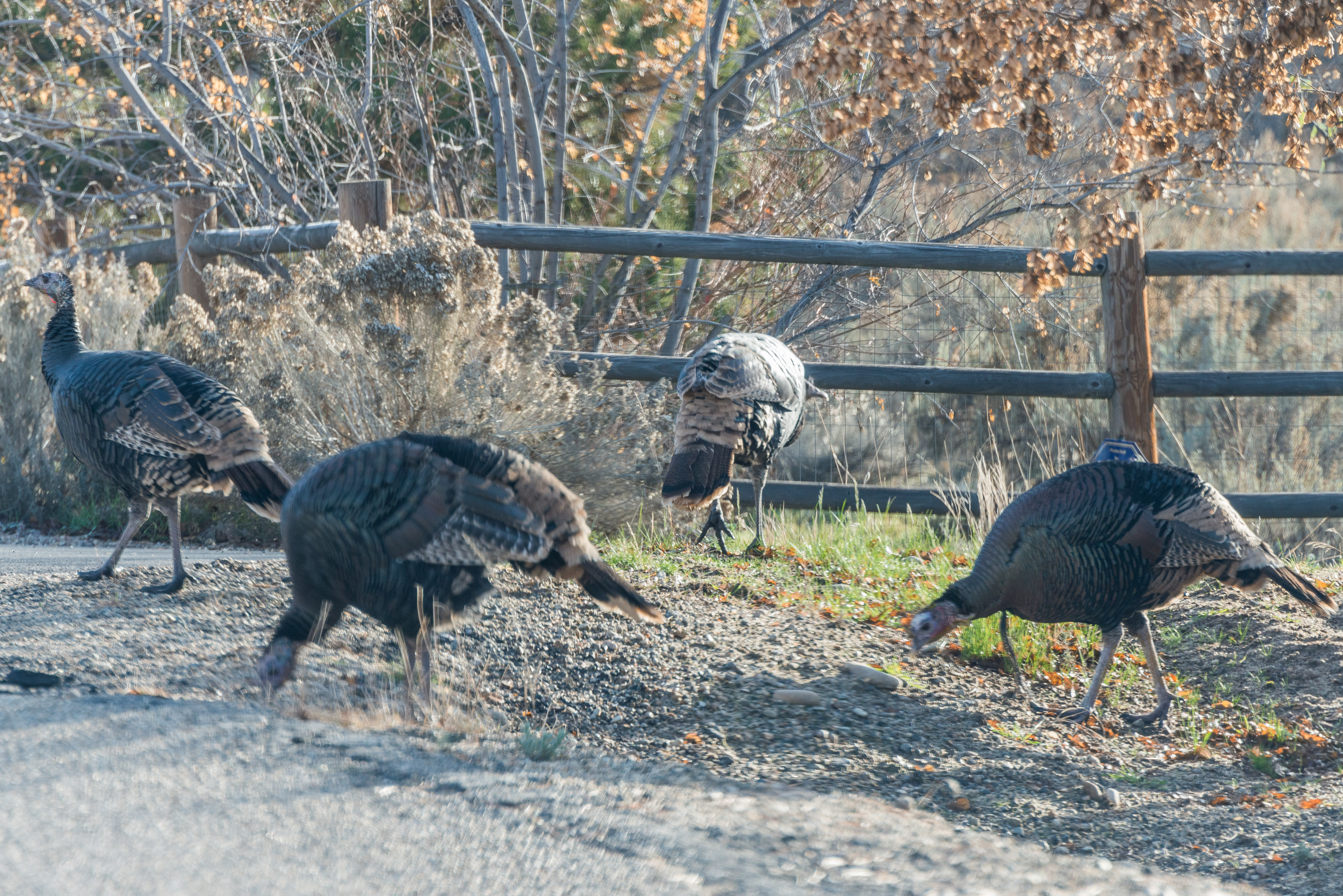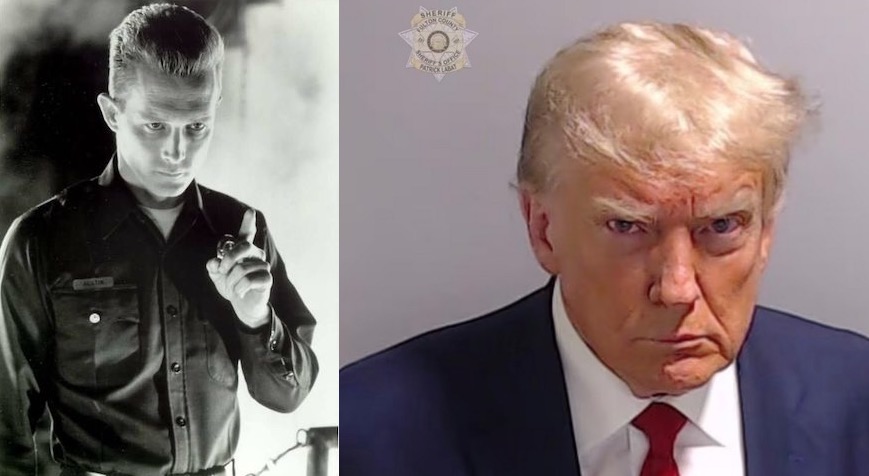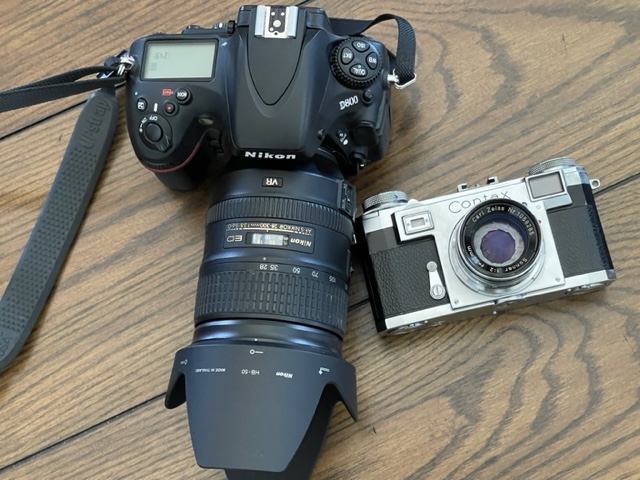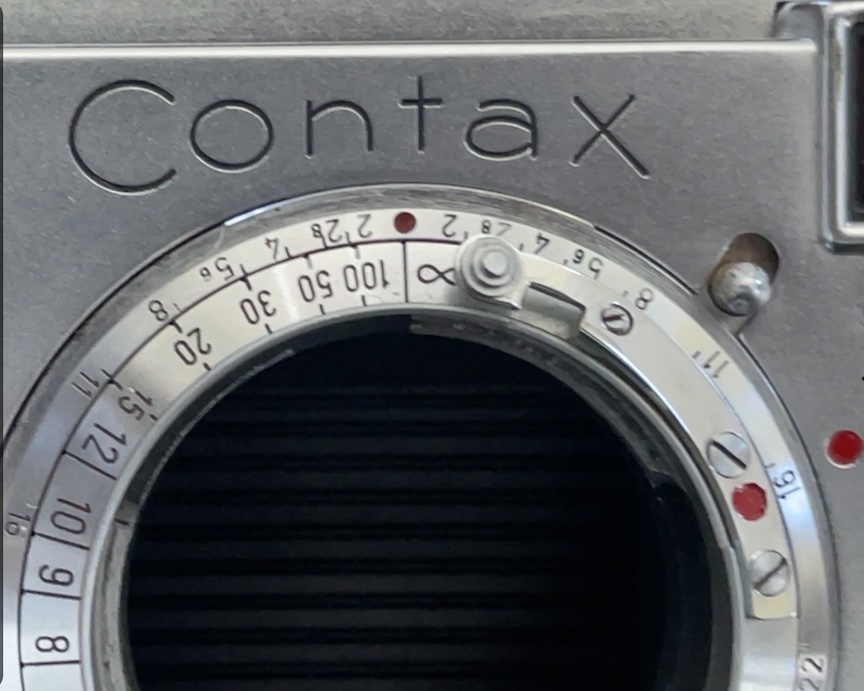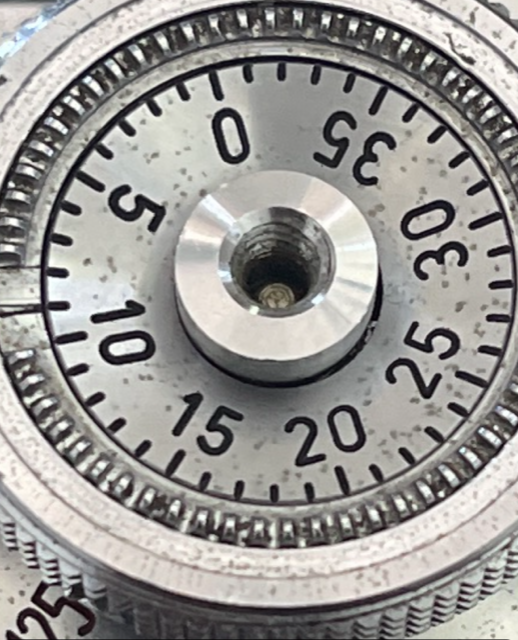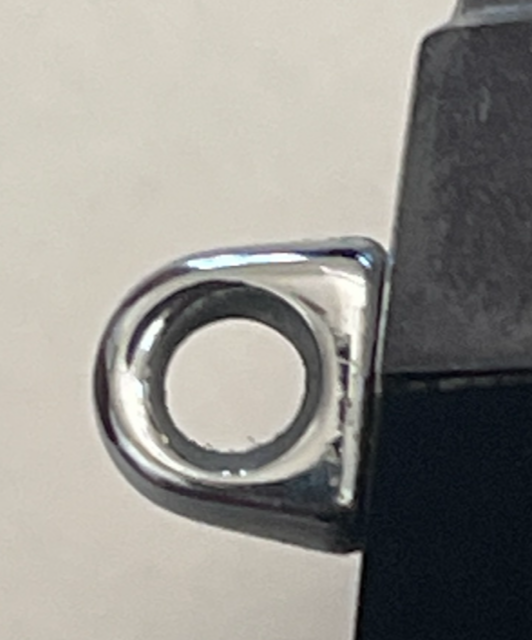A tough cut.
There’s a well known Gary Larson ‘Far Side’ cartoon titled ‘Boneless Chicken Ranch’, showing the chickens all flat and splayed out, like so:
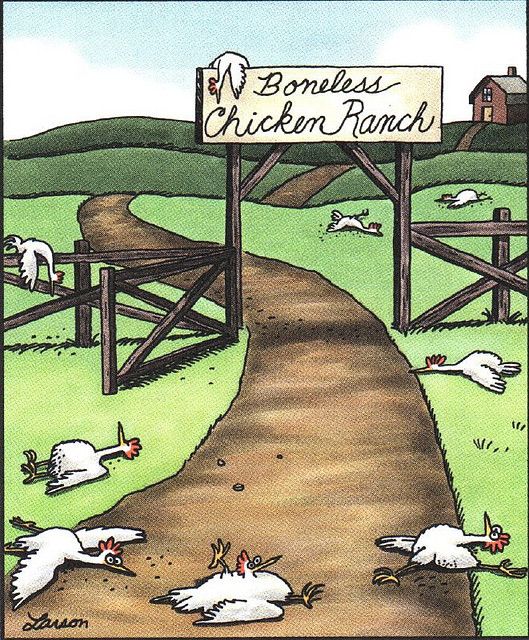
Boneless Chicken Ranch.
How does a brisket work?
The comparison with a brisket cut of beef is apt. Cows have no collarbones so without the tough brisket meat between and either side of their forelegs they would splay out helpless, just like those chickens. And the design of that brisket meat is ingenious. The triangular, tapering piece has the muscle fibers running transversely (the meat cut is referred to as the ‘point’) whereas the rectangular part sees the fibers running vertically (the ‘flat’). There is one point/flat brisket pair on either side of the animal. The muscle orientation provides strength along both the horizontal and vertical axes. Buy a whole brisket and you get both the point and the flat and that’s important to know as will be discussed below. How you carve the meat differs for point and flat briskets.
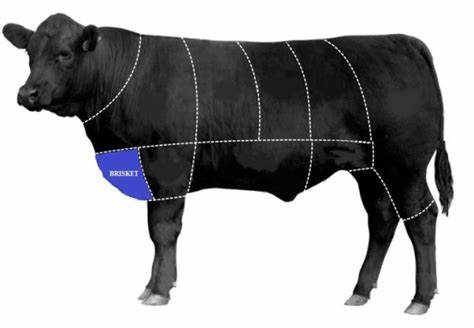
Brisket location.
As with many hard, heavily muscled meats, ‘low and slow’ is the preferred cooking method to allow the muscle fibers to relax and make the result edible. And smoking brisket meat, as any grill aficionado will tell you, is the way to go.
The best smoker:
You can get chintzy smokers, made from very thin steel sheet, at your local hardware store for $150 and they will last you one season. Or you can pay a little more for a Weber Smokey Mountain grill, made from heavy steel plate with an enameled exterior and a decade long life expectancy.
The WSM comes in three diameters and I use the smallest, the 14.5″ model, which nicely accommodates a 5 lb point brisket. Why point? Because it’s the fattier cut which does not dry out so making for a juicier result.
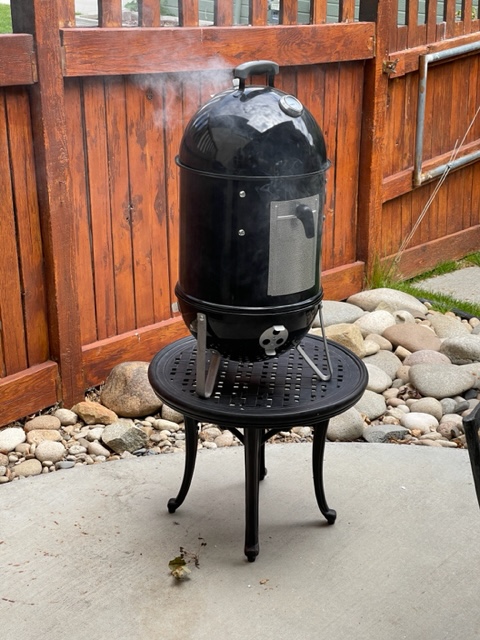
The 14.5″ Weber Smokey Mountain smoker. Click the image for Amazon US
This compact R2D2 unit is rather short of stature so I stand it on a metal side table when in use. Do not stand it on anything combustible!
Brisket meat:
Here is the point cut brisket:
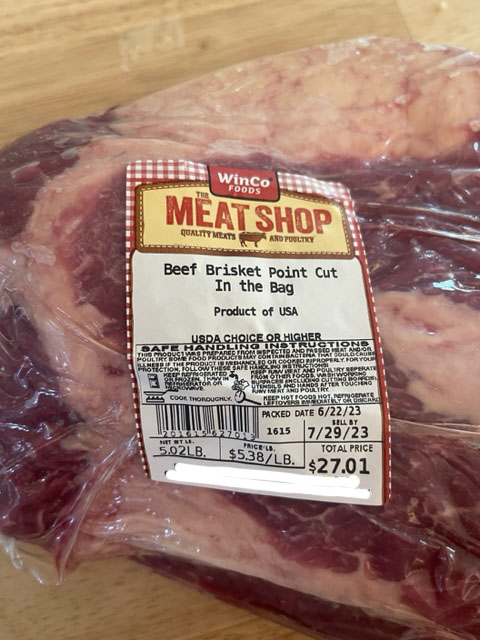
A 5lb. point cut brisket.
The rub:
For the rub I combine 10 grams (1/2 oz.) of kosher salt with 10 grams of freshly ground black pepper and rub the brisket all over with the mixture. No fancy herb additions needed. Remove the brisket from the fridge an hour before starting the smoke to let it warm up to room temperature.
Charcoal and how to light it:
The beauty of the WSM is that it includes a water bath below the two grilles which results in indirect heat for the meat. No flames can reach around the inverted bowler hat design so a fat fire is not likely. Here’s how the parts go together:
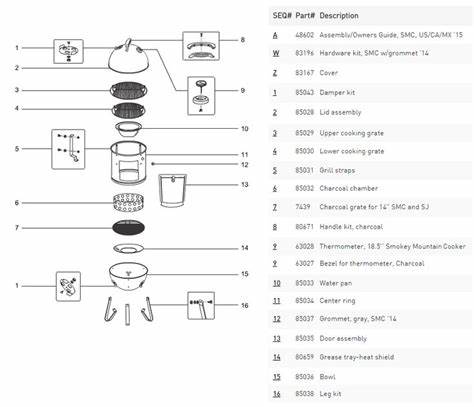
#10 is the water bath.
To fire up the smoker 75 Kingsford charcoal briquettes (more for larger models) are arranged in a pyramid in the perforated retaining ring (#6 in the parts diagram) below the grilles with four Weber starter cubes disposed among these. Light these and let them burn off for 30 minutes with the briquettes exposed to the outdoors, after which the charcoal will have a white ash coat, smoking furiously. Then add four chunks of dried wood – Apple for a sweeter finish, Hickory for a smokier one – place the WSM’s cylinder section (#11 in the parts diagram) atop with the water bath installed and full, insert one or both grilles (I use only the larger top one) and you are ready to place the brisket on top. Be a man and use proper fist sized wood chunks, not those poncy shavings which burn up far too quickly.
The starter cubes have combusted and the charcoal is beginning to show white ash. It will be ready for use in a few minutes:
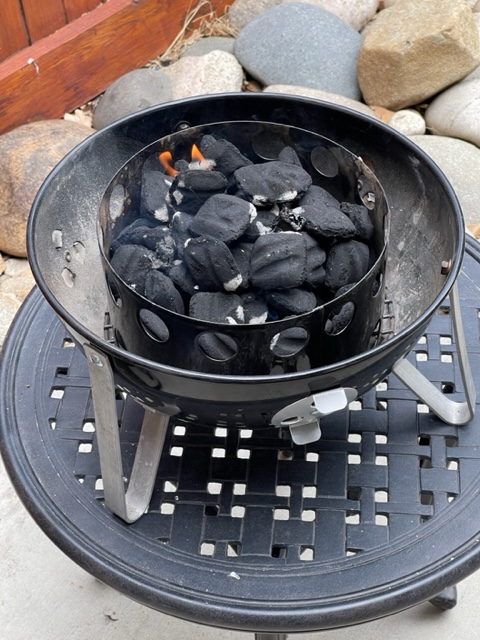
Ready in 15 minutes. The base vent is fully open.
Do not use charcoal starters (dangerous, as the hot coals must be transferred from the starter to the smoker) or lighter fluid (you really want to destroy the ozone layer and have hydrocarbons in your meat?). Use four of those tiny starter cubes and all the hydrocarbons will be thoroughly burned off once the coals are ready for use.
Temperature readings:
Place the brisket fatty side up on the top grill, make sure both bottom and top vents are fully open and place the hemispherical top on the smoker. You are looking at two temperature readings. The thermometer in the hemispherical Weber top reads the internal dome temperature and you are aiming at 200-250F dome temperature – don’t over do it or your meat will dry out. If the temperature rises above 250F partially close the base vent – this controls the oxygen intake for combustion – until you are back in the range. Leave the top vent in the dome fully open at all times.
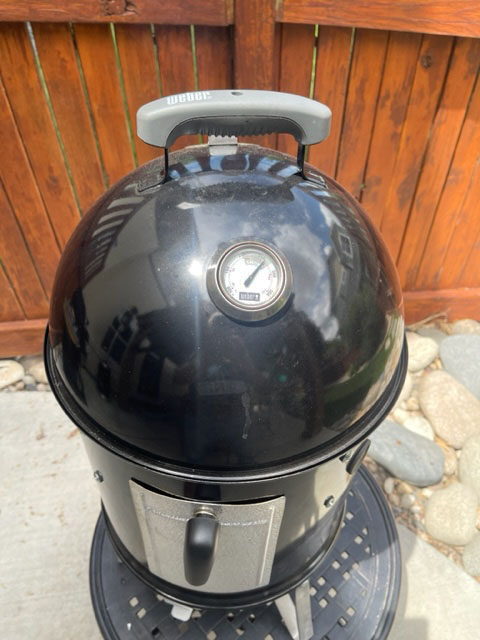
Dome temperature in the sweet spot.
While the Weber’s built-in dome thermometer reports the inside air temperature, the constant reading thermometer inserted in the meat reads ‘doneness’.
The constant reading thermometer:
Before doing so, insert a constant reading thermometer in the thick of the meat. Now you can spend endless dollars on a wi-fi/Bluetooth/NASA-approved device, confirming that a fool and his money are readily parted. Or you can use one of these bullet proof ones, no electronics to fail, no iPhone or mainframe needed to read the results and get the same outcome.
The difference is that you will not be replacing it annually while ‘customer service’ in Shanghai refuses to reply to your desperate warranty claims for your $100 Tempogizmomatic.
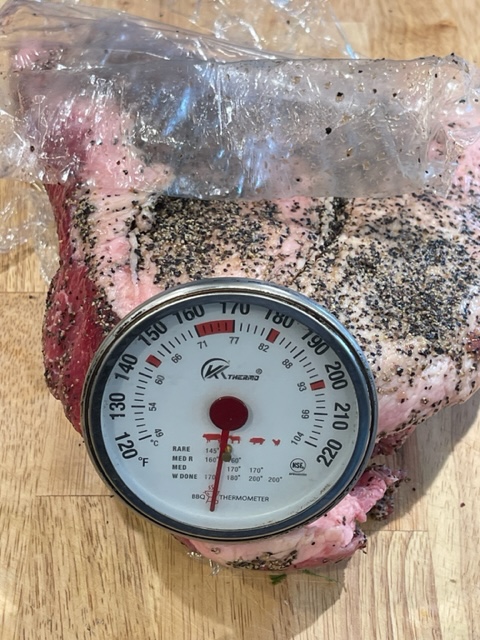
The constant reading thermometer inserted. Click the image for Amazon.
Accuracy? When I bought mine I placed it in a pan of boiling water and instead of 212F it read 190F. A second sample read 211F, close enough. As that’s close to the desired ‘doneness’ temperature this makes for very accurate measurement.
As it gets smokey in there, cover the face of the thermometer with a small piece of Reynoldswrap silver paper, removing the paper when a reading is required. Otherwise you will have a heck of a job seeing the indicator needle.
We want to get to 195-205F for the right degree of doneness. Brisket meat is served well done, not rare or medium-rare. How long does this take? As a general guide I grill/smoke for 1.25 hours per pound of meat, so our 5lb joint will take 6 hours, give or take. Don’t bother checking the internal thermometer until at least 4 hours have elapsed as a) that’s futile and b) each time you pop the dome you will lose heat and have to extend the cooking time. If you keep the dome temperature in the 200-250F range there is no need to spritz the meat with anything until it’s done.
Wood:
How about wood management? Those four manly man sized chunks of wood will be largely burned up in 2 hours, indicated by a lack of smoke emanating from the fully open vent in the dome of the WSM. If you like a smokier finish, add a couple more chunks through the front door in the cylinder section of the WSM at this time, and you will get another hour of smoke. No more is needed. The WSM gets hot so use a pair of these using some of that money you saved by not buying an idiotic electronic Bluetooth thermometer. You can use those same gloves to manhandle the brisket when removing it to the cutting board.
Maintaining the water bowl:
The water bowl inside the WSM, which ensures only indirect heat reaches the meat and helps prevent fat fires, is checked once during the six hour smoking session, after 4 hours. I generally find the water in mine to be two thirds evaporated at that point and simply top it up by pouring additional water into the bowl through the grille(s), being careful not to slop any on the hot coals below. No need to risk removing the brisket with its grille for this step.
Managing the 170F ‘stall’:
I checked the internal thermometer after 4 hours and it read 170F. One hour later, after 5 hours, it still read 170F. This is known as the ‘stall’ and results from the ongoing evaporation of moisture from the joint, which prevents the temperature from rising. You can either simply wait it out – your guests will love you – or wrap the joint in heavy duty Reynolds silver wrap at the 4-5 hour mark to stop evaporation of moisture and help push the joint over the stall point. I did this after 5 hours and the stall ceased, with the joint’s internal temperature reaching 195F after 6 hours and 15 minutes.
Once the meat is removed from the WSM be sure to close both the top and base vents. That will starve the system of oxygen, ensuring the coals are extinguished and that any remaining water in the water bowl does not boil off, leaving hard to remove deposits.
Resting and carving:
Phew! After 6 hours or so you will smell of wood and charcoal smoke and have a beautifully rendered brisket with a dark exterior ‘bark’ ready to be removed to the cutting board, having first checked that the interior thermometer is reporting 195-205F. We are not done yet.
Let the brisket rest at room temperature for 30-60 minutes – this will make it easier to cut. Check back to the second paragraph of this piece and you will see that the brisket has a grain direction, just like pure, untreated wood. When carving the brisket we want to cut across the grain, meaning the knife has to be at right angles to the muscle fibers. Cut incorrectly, meaning in line with those fibers, and you will get a very stringy piece of meat which is no fun to chew. So how to determine the cut direction?
Simple. Cut off a piece thus:
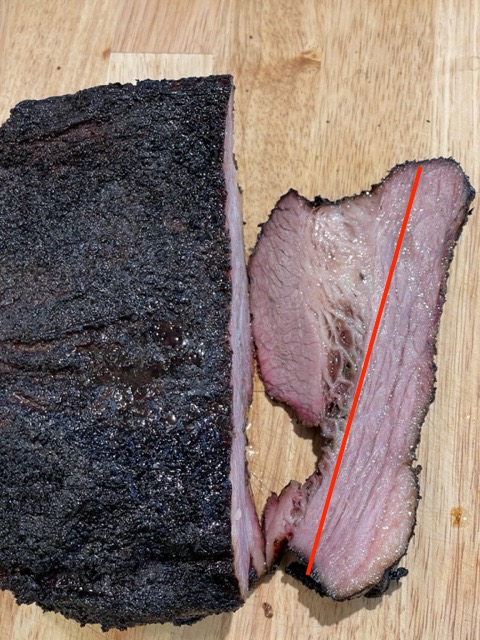
First cut – incorrect.
This cut is wrong. You can clearly see the run of the muscle fibers, denoted by the red line.
Here’s the second cut at right angles to the first – no fibers are visible as the cut is at right angles to the grain:
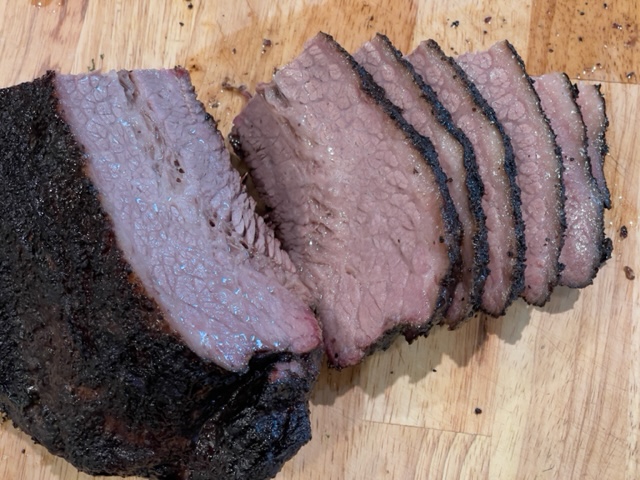
Second and final cut – no fibers visible.
The best carving knife:
What’s the best knife to use? No, it’s most definitely not your utterly useless chef’s knife, especially if you have discovered the massive benefits of a cleaver.
You need a serrated bread knife, like this, to ease the ‘sawing’ through those muscle fibers.
Enjoy!
Nothing beats an Idaho baked potato with butter, sour cream and chives from the garden.
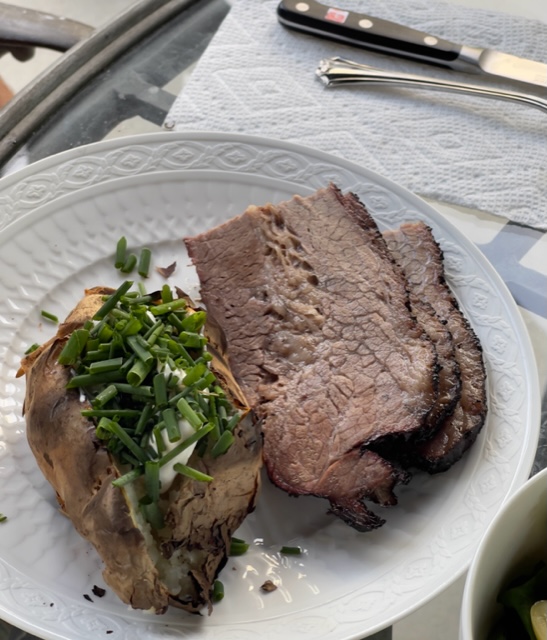
Juicy and perfect..
